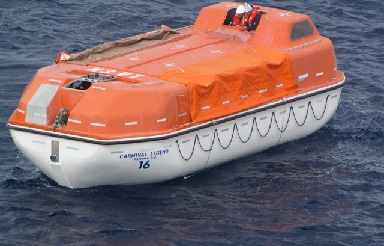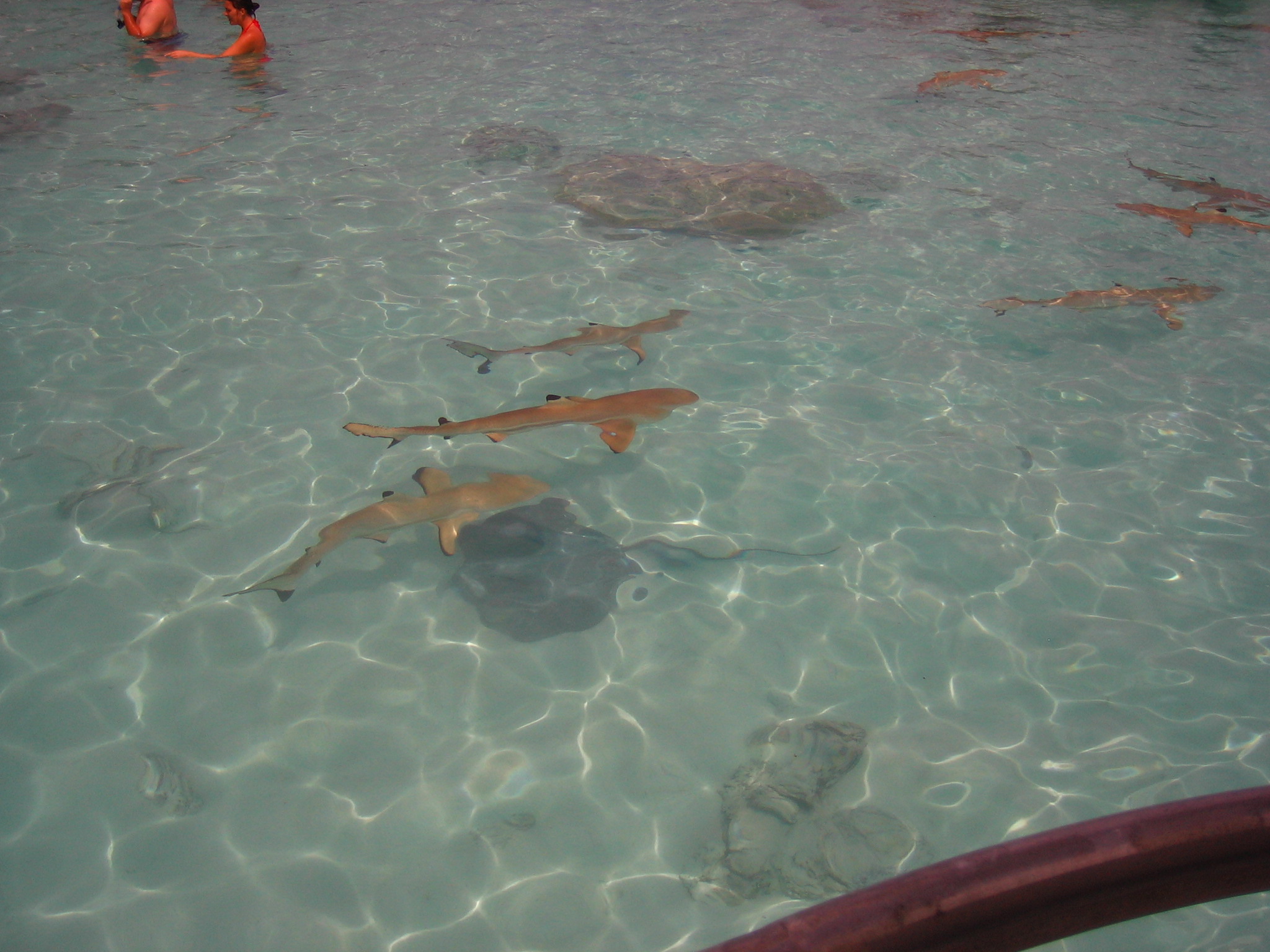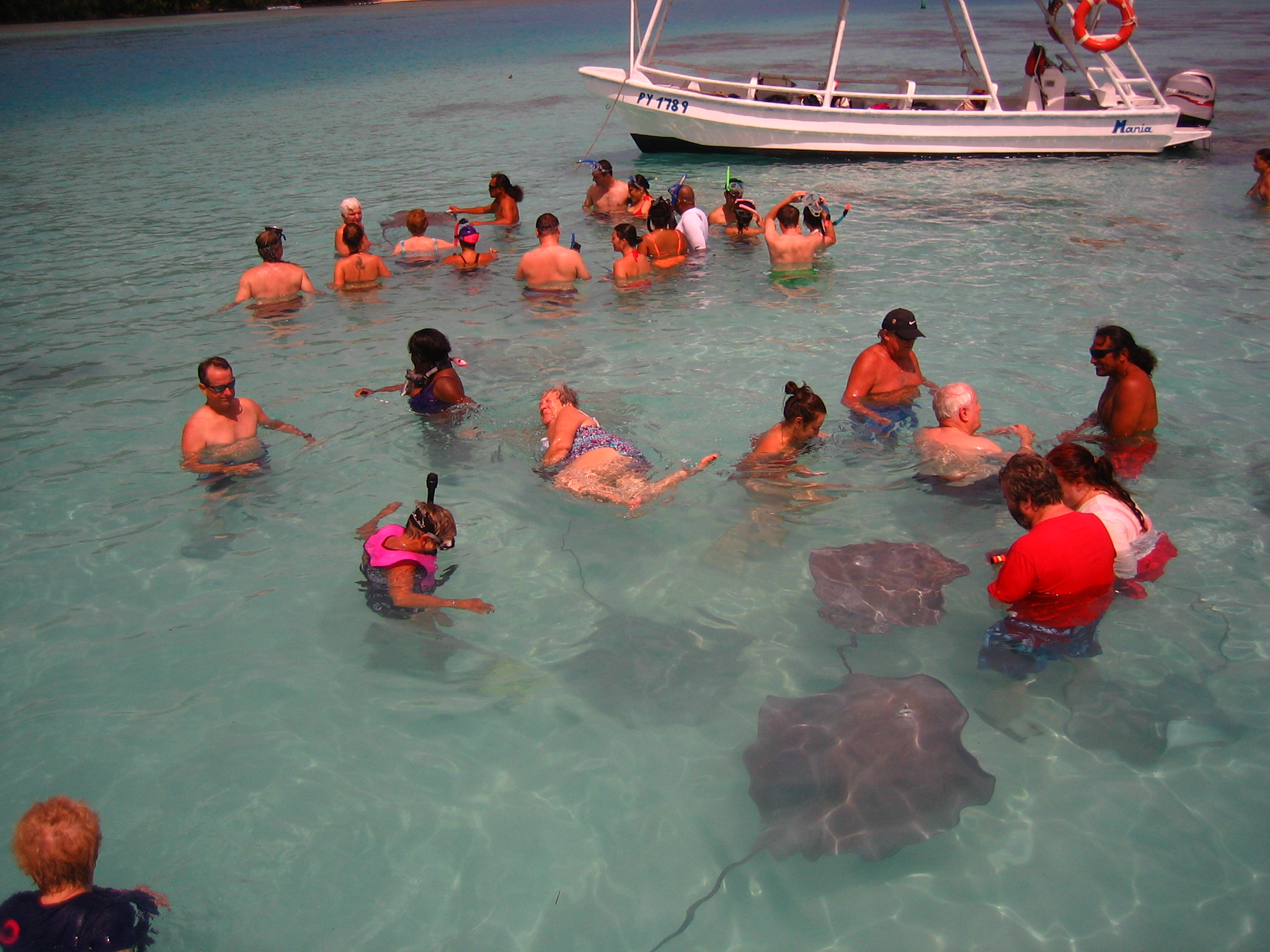Thursday, September 11th – Moo’rea, French Polynesia
Pronounced Moor’-eh-ah. This island is a close neighbor to Tahiti Island and one of several in a chain. The population is much smaller on this one, so small in fact, that unlike Tahiti, there is no  pier. This meant dropping anchor in a deep water cove and using tenders to transfer passengers from the ship to the island. Even more interesting — Moo’rea doesn’t have tender vessels. The Carnival Legend had to launch their lifeboats for us instead. This actually provided a two-fold advantage. Not only did Carnival get to test out four of their lifeboats for a required periodic safety inspection, we (the passengers) got to experience a ride in a lifeboat.
pier. This meant dropping anchor in a deep water cove and using tenders to transfer passengers from the ship to the island. Even more interesting — Moo’rea doesn’t have tender vessels. The Carnival Legend had to launch their lifeboats for us instead. This actually provided a two-fold advantage. Not only did Carnival get to test out four of their lifeboats for a required periodic safety inspection, we (the passengers) got to experience a ride in a lifeboat.
During all the years of cruising, we would go through the lifeboat drill before sailing, but always wondered if they were seaworthy since we’ve never seen them used. We can attest they are safe!
The natives of the islands are a mix of Polynesian and French (for the most part), which means they’re a very attractive people. Brown-skinned, dark to light, and well toned – probably because they work hard to make a living.
There’s not much to Moo’rea other than lush, tropical paradise. Another volcanic isle as seen by the sharp peaks, and protected by it’s own coral reef, Moo’rea is very mountainous, very green, with amazing (I keep using that word!) water. So blue – so many shades of blue. And so clear you can’t tell the depth. Those postcards you see, the ones with impossibly blue water? They’re for rea! Amazing!
 We took another excursion, this time to swim with the sting rays and sharks. Yes, I said sharks! We motored out about 15 minutes (still inside the reef and protected from the ocean swells) to a sandbar where we could stand in water anywhere from waist to chest deep. Our guide this day, Francois, hailed from the smallest island in the chain – one, he says, that has no imports. They’re totally self-sufficient with no automobiles on the island. Such a wonderful personality, perfectly suited to this job. Soft spoken with his French accent, he had no end of patience for all our questions. He carried sardines into the water with him, which
We took another excursion, this time to swim with the sting rays and sharks. Yes, I said sharks! We motored out about 15 minutes (still inside the reef and protected from the ocean swells) to a sandbar where we could stand in water anywhere from waist to chest deep. Our guide this day, Francois, hailed from the smallest island in the chain – one, he says, that has no imports. They’re totally self-sufficient with no automobiles on the island. Such a wonderful personality, perfectly suited to this job. Soft spoken with his French accent, he had no end of patience for all our questions. He carried sardines into the water with him, which attracted the rays immediately. Small and large, they glided through the water to reach him. Such graceful creatures, slick (not slimy) on the gray top side, and soft as the softest kid leather underneath, on the white side. They’ve obviously been fed over the years and know to come here for an easy meal.
attracted the rays immediately. Small and large, they glided through the water to reach him. Such graceful creatures, slick (not slimy) on the gray top side, and soft as the softest kid leather underneath, on the white side. They’ve obviously been fed over the years and know to come here for an easy meal.
Sand sharks circled us the entire time. We were told they’re harmless and, true enough, they never came too close. Brownish in color, they swam in schools (if that’s the proper term) of 6 to 20. Some small (maybe 2-3 feet in length), most of a medium size (4-6 feet), and a few large ones maybe 8 feet or more. Round and round in circles. Unnerving at first, but because they never intruded, it soon became easy to ignore them. (Francois is the one with the long ponytail and, yep, that’s my honey talking to him.)
Of course, sea gulls raised a racket overhead. Francois gathered us around, took a long piece of sardine, and raised his hand overhead. The sea gulls squawked, but did nothing. One larger, darker bird, however, swooped down, made a gliding run directly for Francois’ head, and picked that sardine cleanly from his fingers! Oooh. Aaaah. A frigate bird, we found out later.
We also walked along a beach area, but found it to be heavily coral – and much too painful to walk on.



